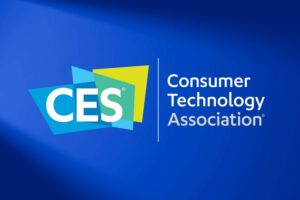Introduction: CES 2024 and the Allure of AI:

As the curtains rise on CES 2024, an annual spectacle showcasing the latest technological marvels, the prevalent theme this year is the pervasive integration of Artificial Intelligence (AI) into everyday objects. The show features a dazzling array of innovations, ranging from AI-enhanced pillows that promise to alleviate snoring issues to washing machines equipped with AI algorithms claiming to decipher fabric types. The allure of a “smart” home, where mundane items are bestowed with the power of AI, is unmistakable. However, amidst the excitement and promise of a more interconnected and intelligent lifestyle, a critical question lingers—does this represent a genuine leap forward in technological progress, or is it a strategic maneuver to capitalize on the allure of AI and capture consumer attention?
The narrative of CES 2024 unfolds against the backdrop of skepticism, with observers questioning the authenticity of AI claims associated with various products. Major industry players like Samsung showcase a lineup of household appliances, including AI vacuum cleaners adjusting suction based on surface types and washing machines allegedly employing machine learning for optimized water and detergent usage. The ambiguity surrounding the definition of “AI” in these contexts fuels the debate about whether these products genuinely contribute to technological advancement or if they are merely adorned with the latest technological buzzwords for marketing purposes. The broader discourse emerging from CES 2024 centers on the need for a discerning evaluation of the impact of AI on daily lives, urging consumers and tech enthusiasts to distinguish between substantive innovation and the embellishment of products with trendy technological features.
The AI Pillow: Snooze No More?
Motion Sleep, a South Korean company, takes center stage at CES with a compelling pitch – “Come get your AI pillow – stop snoring tonight!” The intriguing concept involves a pillow equipped with AI capabilities to detect snoring and gently adjust the user’s head, theoretically alleviating snoring. While this innovation is novel, it prompts a broader contemplation of the meaningful integration of AI into everyday items. Is this an evolutionary step in technology, or are we witnessing a mere gimmick capitalizing on the AI trend?

Beyond Pillows: AI Takes Over the Home
Samsung, a major proponent of AI, commands attention at CES with an array of AI-powered household appliances. An AI vacuum cleaner, resembling its non-AI counterpart, boasts an “AI” function mode claiming to assess surface types and adjust suction levels accordingly. Additionally, a washing machine featuring “AI Wash” purports to detect fabric types using sensors and optimize water, detergent, and rinsing time through machine learning. However, amidst this influx of AI-labeled products, the challenge lies in distinguishing genuine AI integration from marketing hyperbole. The pressing question emerges: Do these innovations authentically harness the power of machine learning, or are they simply riding the AI wave for attention and investment?
Hype vs. Reality: Is AI Just a Marketing Buzzword?
The meteoric rise of ChatGPT, a powerful language model developed by OpenAI, has thrust AI into the spotlight. Eager to capitalize on this excitement, companies are indiscriminately labeling products with the AI tag, irrespective of actual functionality. This raises concerns about misleading claims, a lack of true AI integration, and the commodification of the term itself. The Federal Trade Commission (FTC) in the US has acknowledged the challenge, issuing warnings against exaggerated AI claims. However, the lack of a universally accepted definition for AI complicates matters, leaving consumers and journalists grappling with the ambiguity surrounding the term.
The FTC Weighs In: Tackling AI Misinformation
Recognizing the potential for deception, the FTC has issued advisory notes aimed at companies stretching the definition of AI. The notes emphasize the importance of companies demonstrating genuine AI use and avoiding the exploitation of the term for marketing purposes. Yet, even the FTC acknowledges the ambiguity of the term “AI” with multiple possible definitions, adding another layer of complexity for consumers attempting to navigate the AI landscape.
Consumers Beware: Navigating the AI Hype
For consumers, navigating the AI maze becomes a daunting task. With vague definitions, hidden algorithms, and the proliferation of buzzwords, it becomes challenging to discern genuine innovation from mere marketing tactics. Journalists face similar challenges, often relying on unverified claims from companies that declare their technology as proprietary. In a landscape where the use of the term “AI” has become both a selling point and a potential source of misinformation, critical scrutiny becomes imperative.
Beyond the Hype: AI with Real Potential
However, amid the flurry of AI-infused products, there are glimpses of genuine innovation. Products like R1 by Rabbit, leveraging AI to simplify tasks and circumvent app dependency, showcase the authentic potential of this technology. Similarly, Samsung’s AI fridge, which analyzes the food in it and suggests recipes, demonstrates a thoughtful application of AI for real-world utility.
The Final Question: Do We Need AI “Everything”?
As we navigate the expansive halls of CES 2024, a crucial question lingers: Do we need AI in everything? While smart appliances might offer convenience, the necessity of a pillow analyzing our sleep or a toothbrush guiding our brushing technique is debatable. Instead of chasing AI-driven novelty, perhaps the focus should be on innovations that genuinely address needs and enhance lives, irrespective of the technological buzzwords attached.
Conclusion: Navigating the AI Landscape
CES 2024 has offered a glimpse into a future where AI permeates our daily lives. Yet, amidst the excitement, it is essential to remain critical and discerning. As consumers and tech enthusiasts, navigating this landscape requires an understanding of the genuine potential of AI while avoiding the temptation of being swept away by the allure of “smart everything.” The intersection of technology and everyday life beckons for thoughtful consideration, urging us to distinguish transformative innovation from gimmickry overload.
